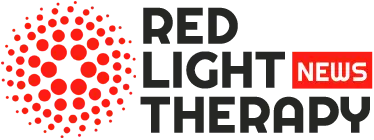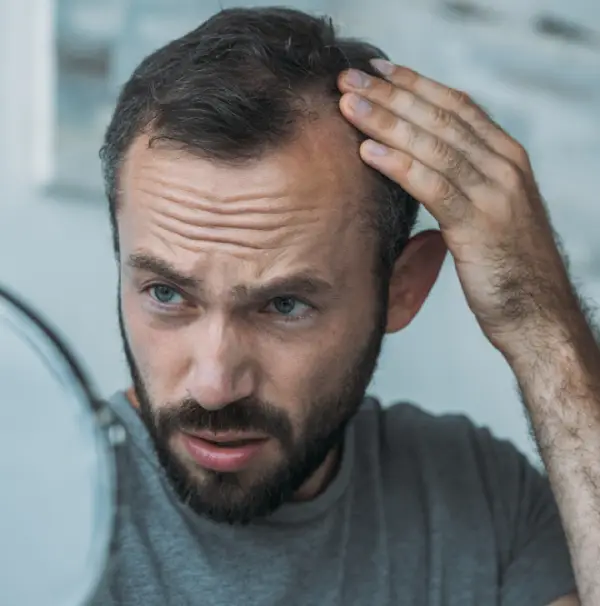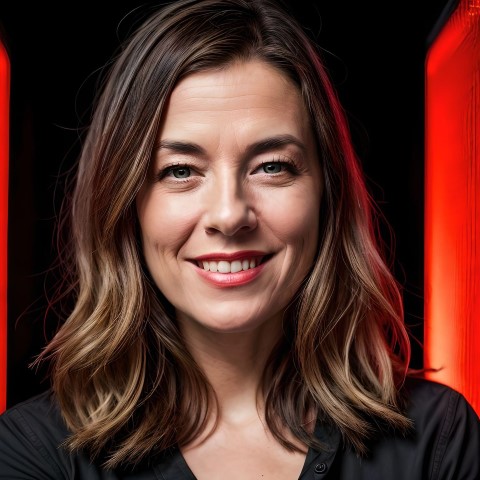Shining a Light on Scalp Health: RLT’s Role in Hair Restoration
Hair loss and hair thinning are common concerns for many individuals and can be caused by a variety of factors including genetics, stress, hormonal changes, medical conditions, and nutritional deficiencies. While there are various treatments available to treat hair loss such as medications and hair transplant surgery, these options can be expensive and come with undesirable side effects. One treatment option that has gained popularity in recent years is Red Light Therapy (RLT) also known as Low-level laser therapy (LLLT).
This is a non-invasive safe and effective treatment option that utilizes red light wavelengths to stimulate hair growth. This cutting-edge technology is designed to penetrate the scalp and deliver red light to the cells in the hair follicles. These cells absorb the red light, which in turn triggers a series of physiological changes that promote hair growth.
Red light therapy (RLT) is an innovative solution that has been shown to be effective in treating hair loss caused by various conditions without any significant side effects including:
| Androgenetic Alopecia |
| Telogen Effluvium |
| Alopecia Areata |
| Traction Alopecia |
| Nutritional Deficiencies |
| Hormonal Changes |
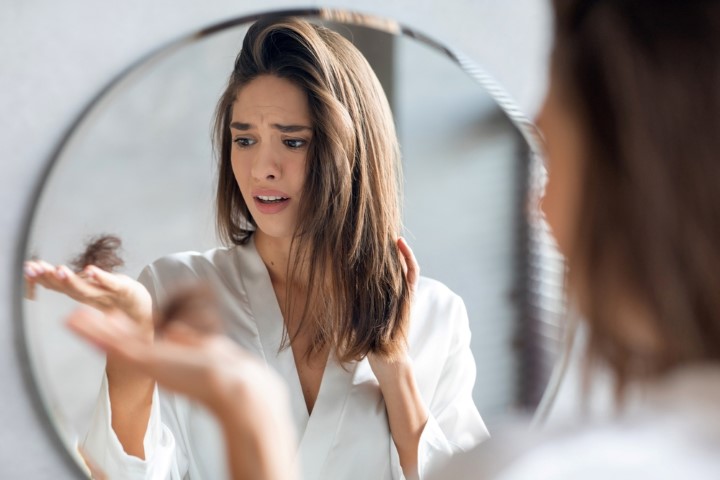
Overall, Red Light Therapy is a safe and effective treatment option for hair loss, and it is suitable for most people. However, it is important to note that the results of RLT can vary depending on the individual, the severity of their hair loss, and the frequency and duration of treatment. It's always best to consult with a healthcare professional to determine if RLT is an appropriate treatment option for your specific hair loss or hair thinning condition.
What Treatment Options Are Available for Hair Loss?
The most widely used solutions to treat hair loss fall into four main categories:
Medications
Medications like Minoxidil and Finasteride are commonly prescribed to treat hair loss. Minoxidil is a topical solution that is applied directly to the scalp, while Finasteride is taken orally. Both medications work by slowing down or stopping hair loss, and in some cases, can stimulate new hair growth.
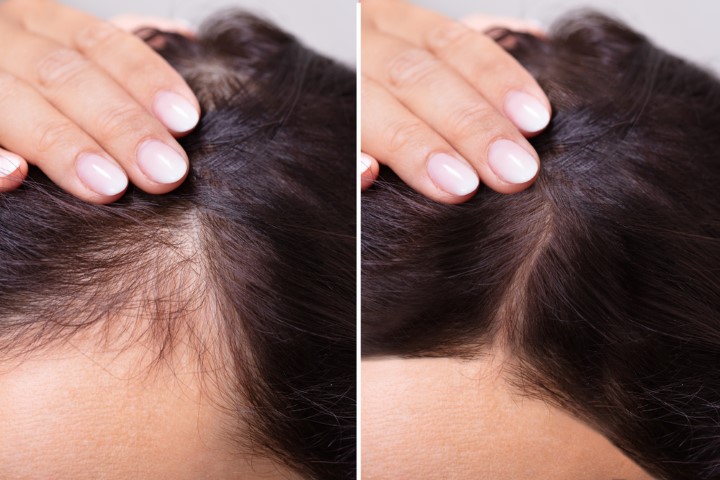
It is worth noting that both medications have undesirable side effects including some of a serious nature such as chest pain, rapid heartbeat, or difficulty breathing and the latter erectile dysfunction, breast tenderness or enlargement, allergic reactions, and, depression or suicidal thoughts.
Hair transplantation
The latest hair transplant procedure is called Follicular Unit Excision (FUE) and this involves extracting individual hair follicles from the back of the head and implanting them into areas of thinning or baldness. It is minimally invasive and produces natural-looking results with a shorter recovery time than previous methods. The transplanted hair follicles will continue to grow hair in their new location. The cost may be a barrier for some.
Microneedling
This is a safe minimally invasive procedure that has become increasingly popular and has shown promising results for treating hair loss. A device with tiny needles is used to create micro-injuries on the scalp, which increase blood flow, stimulate the release of growth factors, strengthen the hair follicles, and promote the growth of thicker, healthier hair. It can be used as a treatment in its own right or in conjunction with other hair loss treatments to enhance the overall results.
Red Light Therapy (RLT) or Low-level laser therapy (LLLT)
This therapy utilizes specialized helmets, caps or combs that emit red light to promote hair growth. The treatment is painless and can be conducted either in a clinic or in the comfort of your own home. RLT can be used as a standalone treatment or in combination with other hair loss treatments to optimise results. We shall explore in more detail how this technology works.
It's important to note that the effectiveness of these treatments can vary depending on the individual and the severity of their hair loss. It's best to consult with a healthcare professional to determine the best course of action.
How does Red Light Therapy Work for Hair Loss?
Red light therapy (RLT), also known as low-level laser therapy (LLLT) promotes hair growth by stimulating the production of adenosine triphosphate (ATP). ATP is a molecule that provides energy to cells. When ATP production increases in the cells of the hair follicle, it enhances the cell's metabolic rate, leading to increased cell activity, and this can lead to hair growth.
In addition to stimulating ATP production, RLT can also increase blood flow to the scalp. This increase in blood flow delivers essential nutrients and oxygen to hair follicles, which can further promote hair growth. In some cases, RLT may also reduce inflammation and oxidative stress, which are known to contribute to hair loss. By reducing inflammation and oxidative stress, RLT may help to slow down or even reverse hair loss in some cases.
Research has shown that RLT can be an effective treatment option for a variety of hair loss and hair thinning conditions. For example, in individuals with androgenetic alopecia (male or female pattern baldness), RLT has been shown to improve hair density and thickness. In individuals with telogen effluvium (temporary hair loss caused by stress, medications, or hormonal changes), RLT has been found to accelerate the hair growth cycle and promote hair growth.
RLT has also been found to promote hair regrowth in individuals with alopecia areata (an autoimmune disorder that causes patchy hair loss), reduce inflammation in individuals with traction alopecia (hair loss caused by tight hairstyles or pulling), and improve hair growth in individuals with nutritional deficiencies or hormonal changes.
Discover our recommended Best Red Light Therapy Devices For Hair Loss
Is Red Light Therapy Effective for Hair Loss?
Hair loss and thinning can result from various factors such as genetics, hormonal imbalances, medication side effects, and medical conditions. Researchers have studied RLT's potential benefits for these conditions and we will examine the most prevalent ones and share with you some of their findings
However, It's important to note that the specific causes and factors contributing to hair loss can vary from person to person. A healthcare provider can help identify any underlying medical conditions that may require specific treatments and provide guidance on treatment and lifestyle changes that can promote hair health.
There are a variety of reasons why someone may experience hair loss, the most common are:
Androgenetic Alopecia:
This type of hair loss is also known as male or female pattern baldness. It is caused by genetic factors and hormone imbalances that lead to the gradual thinning and shrinking of hair follicles, eventually leading to baldness.
Red light therapy (RLT) has been shown to be an effective treatment for androgenetic alopecia (AGA), as demonstrated in several studies. One randomized controlled trial published in the journal Lasers in Medical Science in 2019 found that RLT resulted in a significant increase in hair density in participants with AGA after 24 weeks of treatment.
Another study published in the journal Dermatologic Surgery in 2018 investigated the effects of RLT on hair regrowth in participants with AGA and found significant improvements in hair density and thickness after 16 weeks of treatment. These studies provide evidence for the effectiveness of RLT in treating AGA, and suggest that it may be a safe and non-invasive option for individuals looking to improve hair growth.
Telogen Effluvium:
This is a type of hair loss caused by stress, shock, or trauma to the body. The stressor triggers more hair follicles to enter the resting (telogen) phase, leading to hair shedding and thinning. Telogen effluvium can be triggered by physical or emotional stress, medications, pregnancy, surgery, or illness.
While there is limited research on the use of red light therapy (RLT) for telogen effluvium (TE), some studies have suggested that it may be beneficial for promoting hair regrowth in this condition. One study published in the Journal of Cosmetic and Laser Therapy in 2016 investigated the effects of RLT on TE and found that participants who received RLT treatments twice a week for 24 weeks had a significant increase in hair density compared to those who received a placebo treatment.
Another study published in the Journal of Dermatological Treatment in 2018 found that RLT led to significant improvements in hair density, hair thickness, and hair counts in participants with TE after 24 weeks of treatment. While more research is needed to fully understand the potential benefits of RLT for TE, these studies provide promising evidence for its use as a treatment option.
Alopecia Areata:
This is an autoimmune condition in which the immune system attacks hair follicles, leading to patchy hair loss. The condition can occur at any age, and the exact cause is not fully understood.
Red light therapy (RLT) has shown promise as a treatment option for alopecia areata (AA). One study published in the Journal of the American Academy of Dermatology in 2017 investigated the effects of RLT on AA and found that participants who received RLT treatments twice a week for 24 weeks had a significant increase in hair regrowth compared to those who received a placebo treatment.
Another study published in the Journal of Dermatological Treatment in 2019 found that RLT was effective in improving hair regrowth and quality of life in patients with AA after 16 weeks of treatment. While more research is needed to fully understand the mechanisms of RLT in treating AA, these studies provide promising evidence for its use as a safe and non-invasive treatment option.
Nutritional Deficiencies:
A lack of certain nutrients, such as iron, zinc, vitamin D, and biotin, can lead to hair loss and hair thinning. This can occur due to poor dietary intake or malabsorption.
There is some evidence to suggest that red light therapy (RLT) may be an effective treatment for hair loss caused by nutritional deficiencies. One study published in the Journal of Cosmetic and Laser Therapy in 2018 investigated the effects of RLT on hair growth in participants with low serum ferritin levels (a marker of iron deficiency) and found that RLT led to a significant increase in hair density after 24 weeks of treatment.
Another study published in the Journal of Drugs in Dermatology in 2019 found that RLT was effective in promoting hair growth in participants with alopecia associated with zinc deficiency. While more research is needed to fully understand the mechanisms of RLT in treating hair loss caused by nutritional deficiencies, these studies suggest that RLT may be a safe and non-invasive option for individuals looking to improve hair growth in these conditions.
Medications including Chemotherapy:
Certain medications can cause hair loss as a side effect, including chemotherapy drugs, beta-blockers, and anticoagulants.
There is growing evidence to suggest that red light therapy (RLT) may be an effective treatment for hair loss caused by certain medications. One study published in the Journal of Cosmetic and Laser Therapy in 2014 investigated the effects of RLT on hair regrowth in participants with hair loss caused by chemotherapy and found that RLT led to significant improvements in hair density and hair thickness.
Another study published in the Journal of Investigative Dermatology in 2017 investigated the effects of RLT on hair regrowth in participants with androgenetic alopecia who were also taking finasteride. The study found that those who received RLT treatments three times a week for 24 weeks had a significant increase in hair count, hair thickness, and hair density compared to those who received a placebo treatment.
Thyroid Disorders:
Hypothyroidism (an underactive thyroid) and hyperthyroidism (an overactive thyroid) can both lead to hair loss and hair thinning due to the impact of thyroid hormones on hair growth cycles.
Red light therapy (RLT) has shown promising results as a treatment option for hair loss caused by thyroid disorders, according to some studies. A 2015 study published in the Journal of Photochemistry and Photobiology found that RLT increased hair growth and thickness in mice with hypothyroidism, a condition known to cause hair loss.
Additionally, a 2018 study published in the Journal of Cosmetic Dermatology demonstrated significant improvements in hair density and thickness among women with pattern hair loss associated with thyroid disorders after six months of RLT treatment. While further research is needed, these findings suggest that it may be a safe and non-invasive option for those seeking to address this issue.
Scalp Infections:
Fungal and bacterial infections of the scalp can cause inflammation and damage to hair follicles, leading to hair loss. There is evidence to suggest that red light therapy (RLT) may be an effective treatment for hair loss caused by scalp infections, including fungal and bacterial infections.
A study published in the Journal of Photochemistry and Photobiology in 2018 found that RLT stimulated hair growth and reduced inflammation in mice with dermatitis caused by bacterial infection. Another study published in the Journal of Cosmetic and Laser Therapy in 2019 investigated the use of RLT in patients with fungal scalp infections and found that it led to significant improvements in hair density and thickness.
Trauma or Damage to the Hair:
Repeated use of harsh chemicals, heat styling, and tight hairstyles (such as braids and ponytails) can damage the hair and lead to hair loss and hair thinning.
There is some evidence to suggest that red light therapy (RLT) can be an effective treatment for hair loss caused by trauma or damage to the hair. One study published in the Journal of Cosmetic and Laser Therapy in 2013 examined the effects of RLT on hair regrowth in participants with hair loss caused by traction alopecia, a type of hair loss that occurs due to constant tension on the hair. The study found that RLT led to significant improvements in hair density and hair thickness.
Another study published in the Journal of Clinical and Aesthetic Dermatology in 2018 investigated the effects of RLT on hair regrowth in participants with hair loss caused by hair damage from chemical relaxers. The study found that RLT led to significant improvements in hair density and hair thickness. These studies provide promising evidence for the use of RLT as a safe and non-invasive treatment option for hair loss caused by trauma or damage to the hair.
Age:
As we age, the rate of hair growth slows down, and hair becomes thinner and less dense. This is a natural part of the aging process and is more pronounced in men than in women.
Several studies have shown that red light therapy (RLT) can be an effective treatment for hair loss caused by aging. A study published in the journal Lasers in Medical Science in 2015 investigated the effects of RLT on hair growth in women with androgenetic alopecia and found that RLT significantly increased hair density and thickness. Another study published in the Journal of Cosmetic Dermatology in 2018 also found that RLT was effective in improving hair density in men and women with androgenetic alopecia.
Polycystic Ovary Syndrome (PCOS):
This is a hormonal disorder that can lead to excessive hair growth in some areas of the body and hair loss on the scalp due to the effects of high androgen levels on hair follicles.
There is limited research on the effectiveness of red light therapy (RLT) for hair loss caused by Polycystic Ovary Syndrome (PCOS), but some studies have suggested that it may be beneficial. One study published in the Journal of Cosmetic Dermatology in 2018 investigated the effects of RLT on hair regrowth in women with PCOS-related hair loss and found that RLT led to significant improvements in hair density and thickness. Another study published in Lasers in Medical Science in 2019 reported that RLT was effective in promoting hair growth in women with PCOS-induced hair loss.
Menopause:
Menopause can lead to hair loss and hair thinning due to hormonal changes. Decreased levels of estrogen can lead to a shorter hair growth cycle and reduced hair density.
Several studies have suggested that red light therapy (RLT) can be an effective treatment option for hair loss in menopausal women. One study published in the journal Lasers in Medical Science in 2014 found that RLT led to significant improvements in hair density, hair thickness, and overall hair growth in menopausal women with hair loss. Another study published in the Journal of Cosmetic and Laser Therapy in 2018 also showed significant improvements in hair density and thickness in menopausal women receiving RLT.
Stress:
Severe emotional or physical stress can trigger a type of hair loss called telogen effluvium. This type of hair loss is usually temporary, and hair growth resumes once the stressor is removed.
Red light therapy (RLT) has shown promising results as a treatment for hair loss caused by stress. While there is still limited research on this specific use of RLT, several studies have indicated its effectiveness in reducing stress and promoting relaxation. Stress is a common cause of hair loss, and RLT's ability to reduce stress may help improve hair growth.
One study published in the Journal of Photochemistry and Photobiology in 2017 found that RLT reduced cortisol levels, a hormone associated with stress, in study participants. Another study published in the Journal of Clinical Psychology in 2018 showed that RLT improved anxiety and depression symptoms in participants.
It's important to note that the specific causes and factors contributing to hair loss can vary from person to person. Identifying the underlying cause is important in determining the appropriate treatment options. If you are experiencing hair loss or hair thinning, it is recommended to consult with a healthcare professional to determine the cause and the best course of action.
What is the most effective RLT wavelength to treat hair loss?
The most effective RLT wavelength for hair growth is generally considered to be between 630 and 670 nanometers (nm). This wavelength range is commonly referred to as “high efficacy” or “optimal” wavelength for hair growth.
Studies have shown that red light in the 630-670 nm range can penetrate the skin and scalp to a depth of up to 5 millimeters, reaching the hair follicles and stimulating hair growth. The red light is absorbed by cells in the hair follicles, triggering a series of physiological changes that encourage hair growth.
Several studies have investigated the effectiveness of RLT in the 630-670 nm range for hair growth. In a randomized controlled trial involving individuals with androgenetic alopecia (male or female pattern baldness), researchers found that RLT in this wavelength range improved hair density and thickness after 16 weeks of treatment. Another study involving individuals with alopecia areata (an autoimmune disorder that causes patchy hair loss) found that RLT in this wavelength range promoted hair regrowth in 70% of participants.
It's important to note that while RLT in the 630-670 nm range has been shown to be effective for hair growth, results can vary depending on the individual and the severity of their hair loss. It's also important to use RLT devices that emit high-quality, therapeutic-grade light in the optimal wavelength range.
Final Thoughts And Safety
Red Light Therapy (RLT) is a safe and effective treatment for hair loss, stimulating hair growth, reducing inflammation, and improving scalp circulation. It's a viable alternative to traditional hair loss treatments with proven results worth considering.
Various RLT devices are now available for home use including professional-size Red Light Therapy panels and beds. We suggest that you read fully our short Guidance on How to Select the Best Red Light Therapy Device for your specific condition and needs to ensure safety and efficacy.
RLT treatment is generally considered safe, and most people do not experience any discomfort during the procedure. However, as with any medical treatment, it is important to consult with a healthcare professional before starting red light therapy to determine if it is appropriate for your specific condition and to discuss a treatment plan.
Is RLT safe for treating hair loss?
Yes, RLT is generally considered safe for treating hair loss. It is non-invasive and does not use harmful UV rays.
Are there any side effects or risks associated with RLT for hair loss?
Side effects are rare, but some people may experience mild scalp irritation or redness after treatment. It is important to follow the instructions provided by the device manufacturer and to avoid overexposure to the light.
How long does it take to see results from RLT for hair loss?
The time it takes to see results can vary depending on the individual's hair loss and the specific treatment device being used. Some people may start to see improvements within a few weeks, while others may require several months of treatment.
How long does an RLT hair loss treatment session last?
Treatment sessions can vary in length depending on the specific device being used and the severity of the hair loss. Some sessions may last only a few minutes, while others may last up to 30 minutes.
Can RLT be used to treat all types of hair loss?
RLT may be effective for treating certain types of hair loss, such as androgenetic alopecia, but may not be effective for others. We advise to consult with a healthcare professional to determine the underlying cause of your hair loss and whether RLT is an appropriate treatment option.
How often should RLT hair loss treatments be done?
The frequency of treatments can vary depending on the individual's hair loss and the specific treatment device being used. Some devices may recommend daily treatments, while others may recommend treatments several times a week. We advise to follow the manufacturer's instructions or consult a healthcare professional for guidance.
Is RLT an effective treatment for hair loss in women?
Yes, RLT can be effective for treating hair loss in women, particularly for androgenetic alopecia.
Is RLT effective for hair loss caused by cancer treatment?
There is limited research on the effectiveness of RLT for treating hair loss specifically related to cancer treatment. However, some studies have suggested that RLT may be beneficial for promoting hair regrowth in people who have undergone chemotherapy. It is important to note that anyone undergoing cancer treatment should always consult with their healthcare provider before starting any new treatments, including RLT.
Red light therapy is a type of therapy that uses red or near-infrared light to treat a variety of conditions. During a red light therapy session, a person is exposed to a specific wavelength of red or near-infrared light that is delivered through a light-emitting device. The light penetrates the skin and reaches the cells within the body with a range of therapeutic effects.
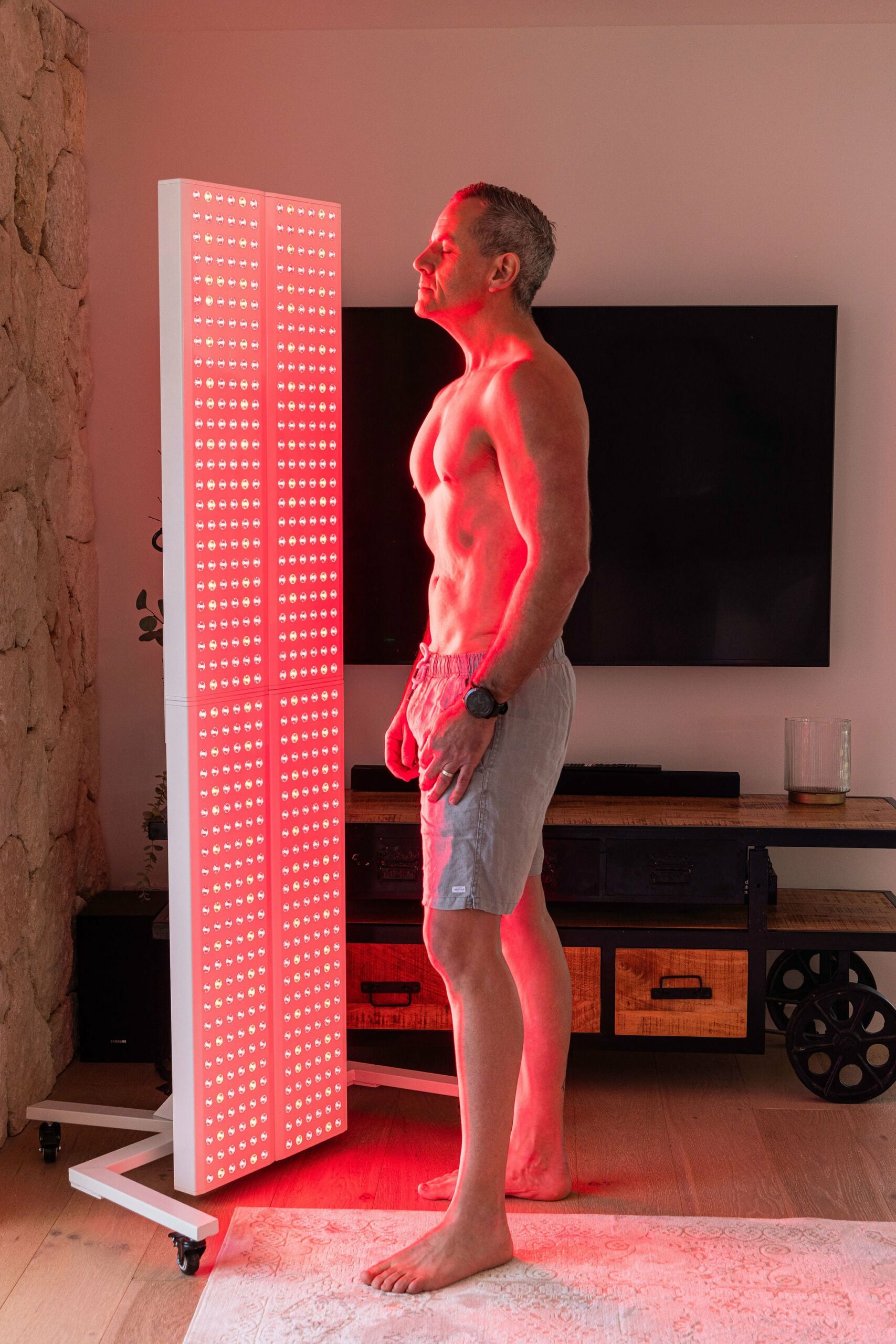
Red light is a type of visible light, Its wavelength falls between approximately 630 and 700 nanometers (nm) on the electromagnetic spectrum. Red light is often used in light therapy treatments for the skin, as it has been shown to have the most beneficial effects on skin cells and collagen production.
Near-infrared (NIR) light, on the other hand, has a longer wavelength than visible red light and falls between approximately 700 and 1200 nm on the electromagnetic spectrum. NIR light is not visible to the human eye, but it can penetrate deeper into the skin and other tissues than visible light, making it useful for a variety of therapeutic applications ranging from wound healing to inflammation reduction or improved circulation, among other benefits.
Different Red Light Therapy devices usually deliver slightly different wavelength ranges that research has shown to be the most effective for the concern they are being recommended for.
Red Light Therapy (RLT) strengthens the mitochondria, the cell’s powerhouse, where cell energy is created. Adenosine Triphosphate (ATP) is the critical energy-carrying molecule that is found in all living organisms. By optimizing the function of the mitochondria, more ATP is produced and with increased energy cells can function optimally.
This scientific breakthrough resulted in scientists discovering Red Light Therapy’s ability to stimulate and speed up tissue repair and growth. Red Light Therapy is now widely used for maintaining a healthy complexion, speeding up muscle recovery, reducing inflammation, improving sleep, treating neurological conditions, balancing hormones, treating pain, and even losing weight.
Research has also indicated that Red Light Therapy can help to restore cellular balance and alleviate the negative impact of blue light exposure. The prevalence of blue light in our society has become a growing concern as many individuals spend prolonged periods of time looking at screens on a daily basis.
Red Light Therapy (RLT) is also called:
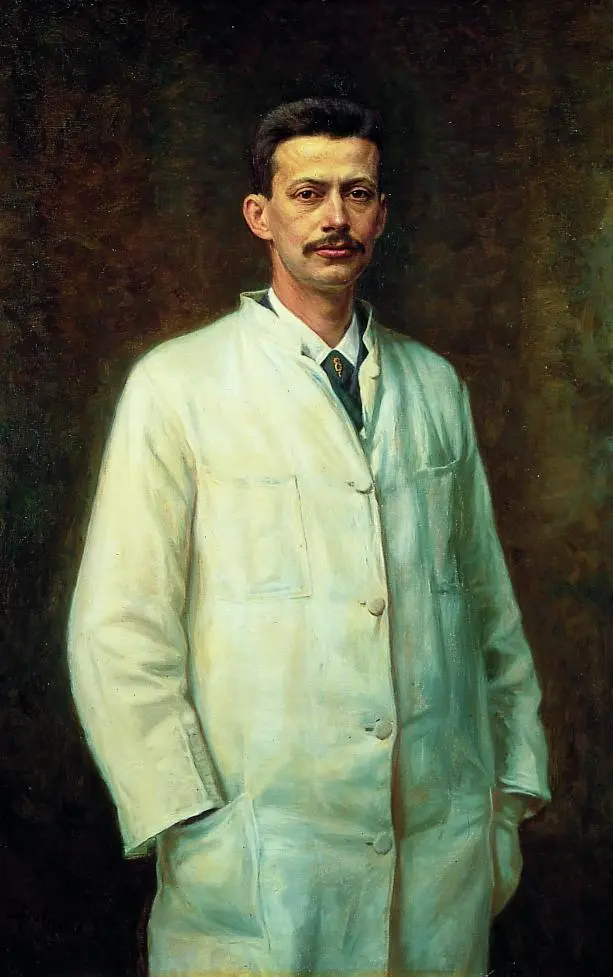
Low-Level Light Therapy (LLLT), Photobiomodulation (PBM), Cold Laser Therapy, Photonic Stimulation, Low-Power Laser Therapy (LPLT), Phototherapy
A Brief History of Red Light Therapy
The journey of Red Light Therapy (RLT) has been both fascinating and impactful, starting from its humble origins in the late 19th century. Dr. Niels Ryberg Finsen, the pioneer in light therapy, made a groundbreaking discovery in 1896 that light could be harnessed to treat Lupus Vulgaris, a form of tuberculosis affecting the skin. His work, which led to the tangible healing of skin lesions, was so revolutionary that he received the Nobel Prize in Physiology in 1903.
Fast forward to 1960, Theodore H. Maiman invented the first operational laser, fulfilling Albert Einstein's theories on the principles of lasers laid out in 1917. This invention opened new avenues for RLT, allowing more precise applications.

NASA took an interest in Red Light Therapy in 1987, conducting experiments to examine its effects on plant growth in space missions. These studies hinted at RLT's potential to benefit not just human health but also broader ecological systems.
In the same vein, Endre Mester's work in 1967 set the stage for modern RLT applications.
His experimentation with low-level laser therapy on skin cancer effects demonstrated the technique's efficacy and led to FDA approval for wound healing in 2002.
The advent of LED technology in the 1990s was a game-changer, offering an efficient and cost-effective alternative to traditional light bulbs. This technological leap made light therapy more accessible to the general public, including its use in sports medicine where physical therapists reported quicker recovery times for sports-related injuries.
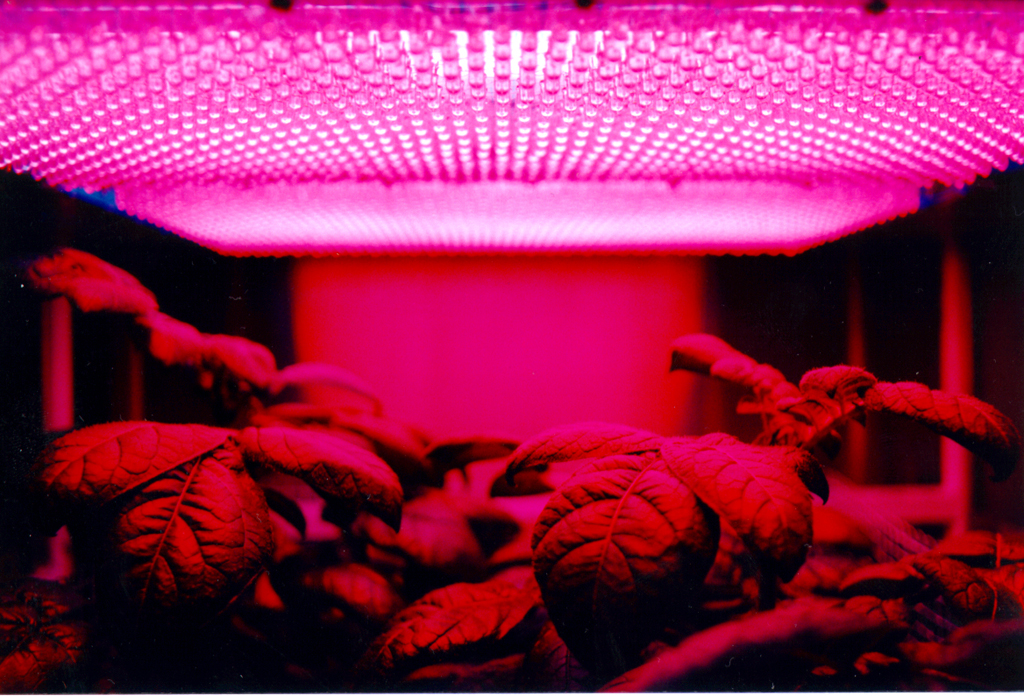
One of the most recent and exciting developments in RLT is its potential role in weight management. Studies indicate that Red Light Therapy can influence hormones like Leptin and Ghrelin, which play key roles in regulating appetite and metabolism. This makes RLT a promising avenue for non-invasive weight loss treatments.
As RLT continues to evolve, its applications keep expanding, crossing multiple disciplines from medicine to ecology. Researchers are continuously probing its potential, finding new ways to apply this age-old yet ever-advancing technology.
Our articles exclusively rely on primary sources of information, encompassing peer-reviewed medical journals and esteemed academic institutions.
- A Systematic Review and Meta-analysis of Randomized Controlled Trials of United States Food and Drug Administration-Approved, Home-use, Low-Level Light/Laser Therapy Devices for Pattern Hair Loss: Device Design and Technology:
- Efficacy Assessment For Low-Level Laser Therapy In The Treatment Of Androgenetic Alopecia: A Real-World Study On 1383 Patients:
- Lasers for Hair Regrowth: Experts Share Their Insights (byrdie.com)
- Low-Level Laser (Light) Therapy (LLLT) for Treatment of Hair Loss – PMC (nih.gov)
- Photobiomodulation For The Management Of Hair Loss:
- Low-Level Light Therapy Downregulates Scalp Inflammatory Biomarkers in Men With Androgenetic Alopecia and Boosts Minoxidil 2% to Bring a Sustainable Hair Regrowth Activity:
- Role of Low-Level Light Therapy (LLLT) in Androgenetic Alopecia
- https://www.researchgate.net/publication/257206620_The_Growth_of_Human_Scalp_Hair_Mediated_by_Visible_Red_Light_Laser_and_LED_Sources_in_Males
- Examining the Safety and Efficacy of Low-Level Laser Therapy for Male and Female Pattern Hair Loss: A Review of the Literature:
- https://practicaldermatology.com/articles/2020-jan/Shedding-Some-Light-On-Hair-Loss
- Role of Low-Level Light Therapy (LLLT) in Androgenetic Alopecia:
- Photodynamic And Photobiological Effects Of Light-Emitting Diode (LED) Therapy In Dermatological Disease: An Update:
- Photobiomodulation for the management of hair loss
